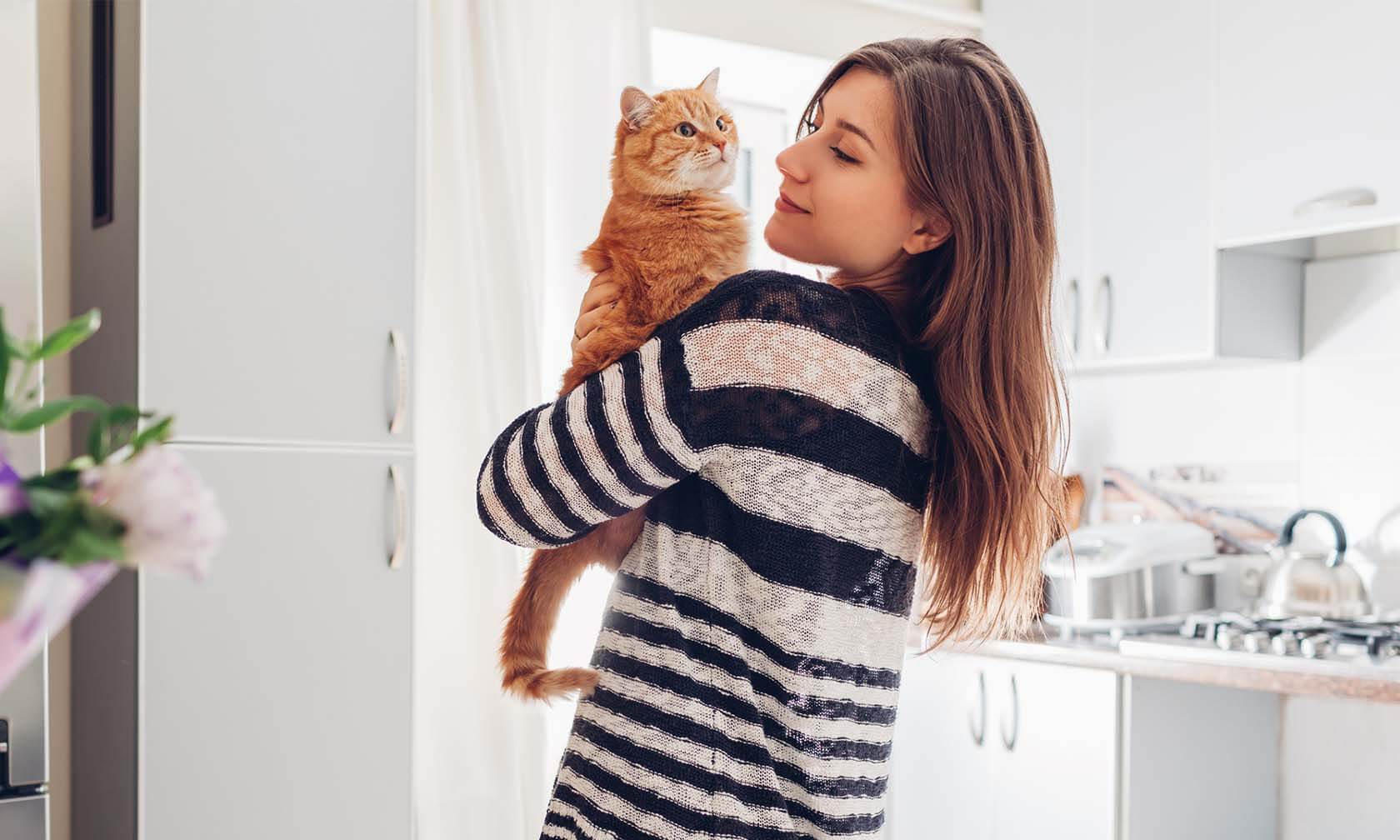How to establish a stronger bond with your cat? You know, cats may not display their affection as openly as dogs, but they possess a depth of emotion and connection that is unique to their species. While they may not greet you with the same enthusiasm as a wagging tail and slobbery kisses, their subtle gestures and quiet companionship speak volumes about the bond they share with their human counterparts.
The Complex Nature of Feline Relationships
Cats are independent creatures by nature, but they are also capable of forming strong attachments to their human companions. These bonds are built over time through shared experiences, trust, and mutual respect. While some cats may be more reserved than others, they all have the capacity for love and loyalty, albeit expressed in their own ways.
Understanding the Benefits of Cat Companionship
The benefits of having a close bond with a cat extend beyond mere companionship. Studies have shown that spending time with a cat can lower stress levels, reduce blood pressure, and even improve overall mood and well-being. Additionally, the emotional support provided by a beloved feline friend can be invaluable during times of hardship or loneliness.
Nurturing Your Relationship with Your Cat
Building a strong bond with your cat requires patience, understanding, and a willingness to meet them on their terms. This may involve respecting their boundaries, providing them with plenty of opportunities for play and enrichment, and offering affection and attention in ways that they find comfortable. By investing time and effort into nurturing your relationship with your cat, you can reap the rewards of a deep and fulfilling connection that will last a lifetime.
Ways To Establish A Stronger Bond With Your Cat
While cats may not always wear their hearts on their sleeves, the love and loyalty they offer their human companions are undeniable. By taking the time to understand and nurture the unique bond you share with your feline friend, you can enjoy the many emotional and physical benefits that come with having a beloved cat in your life. So cherish every moment spent with your furry companion, for in their quiet presence lies a world of love, affection, and unwavering loyalty.
1. Creating a Welcoming Atmosphere
Prioritize Basic Needs: Start by ensuring your cat’s fundamental needs are met, including access to food, water, a clean litter box, and a comfortable resting area. Maintaining a consistent feeding schedule and keeping the litter box clean are crucial for their well-being.
Enrichment Opportunities: Enhance their environment with enrichment items like scratching posts, interactive toys, and elevated perches. These additions provide mental stimulation and opportunities for physical activity, promoting a happier and healthier cat.
2. Quality Time Together
Scheduled Interaction: Dedicate regular intervals each day to spend quality time with your cat. Engage in activities they enjoy, whether it’s playing with toys, grooming sessions, or simply cuddling on the couch. Consistency is key, so establish a routine for these bonding moments.
Bonding Through Play: Use playtime as an opportunity to strengthen your bond with your cat. Experiment with different toys and games to keep them engaged and entertained. Pay attention to their preferences and tailor the activities to suit their interests.
Affection and Attention: Shower your cat with affection and attention during your time together. Talk to them softly, stroke their fur gently, and offer treats as positive reinforcement. Building trust and rapport through these interactions is essential for fostering a deep and lasting connection with your furry friend.
3. Decoding Feline Body Language
Observing Posture and Movements: Cats convey a wealth of information through their body language. Pay close attention to their posture, tail movements, and facial expressions to decipher their mood and intentions. A raised tail or relaxed posture may indicate contentment, while flattened ears or a flicking tail could signal agitation or discomfort.
Understanding Cues: Take the time to familiarize yourself with common feline cues and what they signify. For example, a slow blink from your cat is often a sign of trust and affection, while dilated pupils may indicate excitement or arousal. By tuning into these subtle signals, you can better understand your cat’s emotions and respond accordingly.
Respecting Boundaries: Respect your cat’s boundaries and signals for space. If they retreat or show signs of discomfort, give them the freedom to retreat to a quiet area where they feel safe and secure. Avoid forcing interactions or invading their personal space, as this can erode trust and lead to stress.
4. Acknowledging Individuality
Unique Personalities: Just like humans, every cat has its distinct personality and preferences. Some may be outgoing and sociable, while others are more reserved and independent. Embrace and celebrate your cat’s individuality by allowing them to express themselves in their way.
Tailoring Interactions: Tailor your interactions to accommodate your cat’s personality and comfort level. While some cats may enjoy cuddling and affectionate gestures, others may prefer interactive play or simply being in the same room as you. By respecting their preferences and boundaries, you can foster a deeper sense of trust and connection with your feline companion.
5. Cultivating Trust Through Positive Techniques
Utilize Positive Reinforcement: Strengthen your bond with your cat by employing positive reinforcement methods. Reward desirable behaviors, such as using the litter box or scratching posts, with treats, praise, or extra playtime. Consistency and patience are essential in reinforcing positive behaviors and building trust over time.
Avoid Negative Reinforcement: Steer clear of punishment or negative reinforcement techniques, as these can undermine trust and lead to fear or anxiety in your cat. Instead, focus on encouraging and rewarding behaviors you want to see more of, while gently redirecting unwanted behaviors.
6. Stimulating Their Minds for Well-being
Engage in Enrichment Activities: Keep your cat mentally stimulated and fulfilled by offering a variety of enrichment activities. Invest in puzzle feeders, interactive toys, and training sessions to provide mental challenges and opportunities for problem-solving. Engaging in these activities together not only strengthens your bond but also promotes mental agility and prevents boredom.
Preventing Behavioral Issues: Mental stimulation is crucial for preventing boredom and behavioral problems in cats. By providing outlets for their instincts and cognitive abilities, you can reduce stress and frustration while fostering a harmonious relationship based on mutual trust and understanding.
7. Honoring Their Privacy
Designated Retreats: Create designated areas in your home where your cat can retreat and unwind without disturbance. Whether it’s a cozy bed in a quiet corner or a secluded perch by the window, providing these safe spaces allows your cat to recharge and relax on their terms.
Respectful Interactions: Respect your cat’s boundaries and cues for when they need space. Avoid intruding on their personal space or forcing interactions when they’re not in the mood. By allowing them to dictate the pace of interactions, you show understanding and build trust in your relationship.
8. Nurturing Through Grooming
Bonding Through Care: Regular grooming sessions offer an ideal opportunity to bond with your cat while attending to their hygiene needs. Brushing their fur, trimming their nails, and cleaning their ears not only promote their physical health but also strengthen their emotional connection.
Positive Reinforcement: Make grooming a positive experience by incorporating treats, praise, and gentle handling. Approach grooming sessions with patience and sensitivity, allowing your cat to feel comfortable and secure in your presence. By associating grooming with positive interactions, you enhance their trust and reinforce your bond over time.

9. Promoting Health and Wellness
Regular Veterinary Care: Schedule routine check-ups with your veterinarian to monitor your cat’s health and address any potential issues early on. Stay up-to-date on vaccinations, flea and tick prevention, and dental care to ensure they remain in optimal health.
Nutritious Diet: Provide your cat with a balanced and nutritious diet tailored to their age, weight, and dietary needs. Choose high-quality cat food and offer plenty of fresh water to keep them hydrated. Consult with your veterinarian for guidance on feeding practices and dietary supplements if necessary. How AI, ChatGPT maximizes earnings of many people in minutes
Physical Activity: Encourage regular exercise and play to keep your cat physically fit and mentally stimulated. Set aside time each day for interactive play sessions using toys that mimic prey, such as feather wands or laser pointers. Engaging in play not only strengthens your bond but also promotes a healthy weight and reduces the risk of obesity-related health issues.
10. Bonding Through Caregiving
Health Monitoring: Pay attention to any changes in your cat’s behavior, appetite, or litter box habits, as these could be indicators of underlying health issues. Promptly address any concerns by seeking veterinary care to ensure your cat receives timely treatment and support.
Grooming and Hygiene: Maintain your cat’s grooming routine by brushing their fur, trimming their nails, and cleaning their ears regularly. This not only keeps them looking their best but also promotes good hygiene and prevents skin and coat problems. Motivation – Mind – Success – Thinking – Productivity – Happiness
Emotional Well-being: Provide a safe and nurturing environment for your cat to thrive emotionally. Offer plenty of opportunities for mental stimulation, such as interactive toys, puzzle feeders, and cozy hiding spots. Spend quality time bonding with your cat through cuddling, grooming, and gentle affection to strengthen your emotional connection.
11. Broadening Horizons Together
Gradual Exposure: Introduce your cat to new experiences and environments gradually, allowing them to acclimate at their own pace. Start with small steps, such as introducing them to new toys or scents in a familiar environment, before progressing to more challenging situations, like meeting new people or exploring outdoor spaces. Business – Money Making – Marketing – E-commerce
Positive Reinforcement: Use treats, praise, and gentle encouragement to reward your cat for positive behavior during new experiences. By associating these experiences with positive outcomes, you can help build their confidence and create positive associations with novel stimuli.
12. Understanding Feline Vocalizations
Listening Intently: Pay close attention to your cat’s vocalizations, as they use different sounds to express their emotions and needs. Meowing, purring, hissing, and chirping are all forms of communication that can provide valuable insights into your cat’s state of mind. Health books, guides, exercises, habits, Diets, and more
Responding Appropriately: Respond to your cat’s vocalizations with empathy and understanding, acknowledging their needs and desires. Whether they’re seeking attention, expressing discomfort, or simply saying hello, responding in a caring and attentive manner reinforces your bond and fosters trust and communication.
13. Safeguarding Outdoor Adventures
Enclosed Outdoor Space: Create a safe outdoor environment for your cat by installing a catio or enclosed garden area. These enclosed spaces allow your cat to experience the outdoors safely, protected from potential dangers like traffic, predators, and toxins. Provide stimulating elements such as perches, climbing structures, and interactive toys to enhance their outdoor experience. Fitness – Meditation – Diet – Weight Loss – Healthy Living – Yoga
Supervised Excursions: Accompany your cat during outdoor excursions to ensure their safety and provide supervision. Use a harness and leash for walks or explore secure outdoor areas together. Supervised outdoor time not only allows your cat to enjoy fresh air and stimulation but also strengthens your bond as you share experiences in nature.
14. Fostering Learning and Engagement
Positive Reinforcement Training: Use positive reinforcement techniques to teach your cat new behaviors and tricks. Reward desired behaviors with treats, praise, or playtime to encourage repetition and learning. Keep training sessions short, fun, and rewarding to maintain your cat’s interest and enthusiasm. RPM 3.0 – 60% CONVERSION & Money for Affiliate Marketing
Enrichment Activities: Provide opportunities for mental stimulation and enrichment through interactive toys, puzzle feeders, and environmental enrichment. Rotate toys regularly to keep your cat engaged and challenged, and create opportunities for exploration and discovery in their indoor environment. By incorporating training and enrichment into your cat’s routine, you can strengthen your bond while promoting mental and physical well-being.
15. Establishing Stability and Routine
Consistent Schedule: Maintain a routine for feeding, playtime, and other daily activities to provide your cat with a sense of predictability and security. Consistency in daily routines helps your cat feel more comfortable and confident in their environment, reducing stress and anxiety.
Safe Spaces: Create designated safe spaces within your home where your cat can retreat and relax when they feel overwhelmed or anxious. Provide cozy hiding spots, comfortable bedding, and elevated perches where they can observe their surroundings and feel secure.
16. Offering Reassurance and Support
Comfort During Change: Be attentive and supportive during times of change or transition, such as moving to a new home, introducing new pets, or experiencing changes in routine. Offer reassurance through gentle affection, calming pheromone diffusers, or familiar scents to help ease their anxiety and promote a sense of security. Cat accessories on Amazon
Responsive Care: Pay attention to your cat’s body language and vocalizations to identify signs of stress or discomfort. Respond promptly and compassionately to their needs, offering comfort and support as needed. By providing a nurturing and supportive environment, you can help your cat feel secure and confident in their surroundings.
Other Interesting Articles




